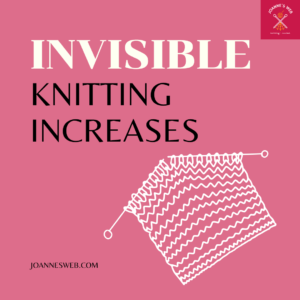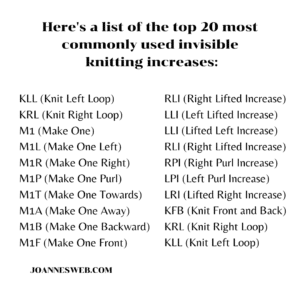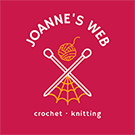Have you ever worked a pattern only to find that ugly hole that kind of ruins the whole project? Even if you find a way to mask it, YOU know it’s there, right..?
In this comprehensive guide, we’ll explore the top 20 most commonly used invisible knitting increases, their unique characteristics, and when to use them. So grab your needles and let’s dive in!

Knitting Increase with Markers
Understanding Knitting Increases
Before we jump into the specifics, let’s quickly review what knitting increases are all about. Increases are stitches that you add to your knitting, increasing the total number of stitches on your needle. They’re essential for shaping garments, creating decorative motifs, and adding texture to your projects.
1. KLL (Knit Left Loop)
Characteristics: Left-leaning increase. Description: KLL involves picking up the strand between the stitch just knit and the next stitch on the left-hand needle, knitting into the back of this strand, and then knitting the next stitch as usual. It creates a smooth increase that slants to the left.
2. KRL (Knit Right Loop)
Characteristics: Right-leaning increase. Description: Similar to KLL, KRL involves picking up the strand between the stitch just knit and the next stitch on the left-hand needle, but you knit into the front of this strand instead. This creates a right-leaning increase.
3. M1 (Make One)
Characteristics: Versatile increase. Description: M1 is a generic term for any invisible increase where you create a new stitch without using an existing stitch. It’s a go-to increase for adding stitches without leaving noticeable gaps or holes.
4. M1L (Make One Left)
Characteristics: Left-leaning increase. Description: M1L is specifically designed to create a left-leaning increase. It involves picking up the bar between the stitch just knit and the next stitch on the left-hand needle from front to back, then knitting into the back loop of this strand.
5. M1R (Make One Right)
Characteristics: Right-leaning increase. Description: Opposite to M1L, M1R creates a right-leaning increase. You pick up the bar between the stitch just knit and the next stitch on the left-hand needle from back to front, then knitting into the front loop of this strand.
6. M1P (Make One Purl)
Characteristics: Left-leaning increase. Description: M1P is similar to M1L but is worked on the purl side of the fabric. It creates a new stitch that leans to the left, making it ideal for shaping projects or adding decorative elements on the wrong side of the fabric.
7. M1T (Make One Towards)
Characteristics: Right-leaning increase. Description: M1T is a right-leaning increase where you pick up the bar between the stitch just knit and the next stitch on the left-hand needle from front to back, then knit into the back loop of this strand. It creates a new stitch that slants to the right.
8. M1A (Make One Away)
Characteristics: Left-leaning increase. Description: M1A is similar to M1T, but instead of picking up the bar from front to back, you pick it up from back to front. This creates a left-leaning increase that blends seamlessly into the fabric.
9. M1B (Make One Backward)
Characteristics: Right-leaning increase. Description: M1B is a variation of M1 where you pick up the bar between the stitch just knit and the next stitch on the left-hand needle from back to front, then knit into the back loop of this strand. It creates a right-leaning increase.

Invisible Knitting Increases
10. M1F (Make One Front)
Characteristics: Left-leaning increase. Description: M1F involves lifting the strand between the stitch just knit and the next stitch on the left-hand needle from front to back, then knitting into the front loop of this strand. It creates a left-leaning increase that is ideal for lace or decorative stitches.
11. RLI (Right Lifted Increase)
Characteristics: Right-leaning increase. Description: RLI is a lifted increase where you lift the right leg of the stitch below the next stitch on the left-hand needle and knit into the back loop of this leg. It creates a right-leaning increase that is commonly used in shaping projects.
12. LLI (Left Lifted Increase)
Characteristics: Left-leaning increase. Description: LLI is similar to RLI but creates a left-leaning increase. You lift the left leg of the stitch below the next stitch on the left-hand needle and knit into the front loop of this leg.
13. RPI (Right Purl Increase)
Characteristics: Right-leaning increase. Description: RPI is used on the purl side of the fabric and involves lifting the strand between the stitch just purled and the next stitch on the left-hand needle, then purling into the back loop of this strand. It creates a right-leaning increase.
14. LPI (Left Purl Increase)
Characteristics: Left-leaning increase. Description: LPI is similar to RPI but creates a left-leaning increase. You lift the strand between the stitch just purled and the next stitch on the left-hand needle, then purl into the front loop of this strand.
15. LRI (Lifted Right Increase)
Characteristics: Right-leaning increase. Description: LRI is a variation of the lifted increase where you lift the left leg of the stitch below the next stitch on the left-hand needle and knit into the back loop of this leg. It creates a right-leaning increase.

List of Common Knitting Increases


0 Comments